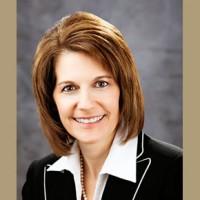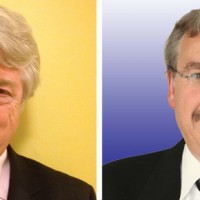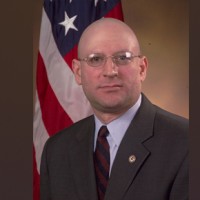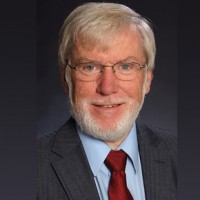
ACAMS Today brought together the panelists of this year's first session for a reflections discussion on the past 10 years of ACAMS and the compliance field.
John Byrne, Al Gillum, Mike McDonald, Saskia Rietbroek and Dan Soto were all present at the first ACAMS conference in 2002. All the panelists shared memories of ACAMS during this past decade and how the compliance field has evolved.
ACAMS Today: How did you first learn about ACAMS?
Mike McDonald: I was involved in the early developmental stages of ACAMS and learned about ACAMS at the same time Saskia did when we finally came up with the name of the association.
Saskia Rietbroek: In the process of bouncing around some strategic plans for Alert Global Media, the idea of an association for AML professionals was born in mid-2001, a couple of months before 9/11. I attended the Annual Conference of the American Society for Association Executives in August 2011, to learn what associations are all about. We also sent out a survey email asking people to vote for the association's name and also for the credential's name. There were many names on the survey and one of the options was CAML.
John Byrne: We had to reject the acronym "CAML" because of the CAMEL ratings in the financial sector and we felt that the new association's name would be confusing to those in the banking industry.
MM: The way this organization started was back in 1999 and 2000. A lot of people started to jump up as experts in the compliance field. Banks were hurting because they were bringing in these so called experts who really did not know the laws and were not anti-money laundering experts. So the idea came up to start an organization that trained anti-money laundering experts. So when banks want to find an AML specialist, the CAMS credential is an indication that you know the AML laws and regulations.
SR: Another important decision that was made early on was not allowing anyone to be grandfathered into the CAMS designation.
JB: Not grandfathering anyone in is what has given and maintained the credibility and quality of the designation.
SR: Even well-known experts in the field were required to take the CAMS exam to receive the designation. Absolutely no one was grandfathered into the program.
MM: Another important and successful decision that was made early on was whether or not ACAMS would be U.S.-centric type of organization or would ACAMS implement the international standards. The decision was made to implement the international standards and make the association an international organization.
SR: In the beginning most of the ACAMS members were from the U.S., but compliance is a global issue and if you only know about the BSA, in the long run that is not enough. Compliance is and will continue to be a global issue.
Al Gillum: I remember at a cocktail hour after one of the major compliance conferences, where we were discussing the chatter of people saying they were experts in the field and Charlie Intriago brought up that a process needs to be put into place and adhered to in order to be called an expert in the compliance field. And thus, the origination of the ACAMS organization was born.
Dan Soto: My first exposure to ACAMS was when the founder, Charlie Intriago gave me a call asking if I wanted to be the chairman of the organization's advisory board. Of course I put him on hold and called my colleagues Byrne and Small to ask them what they thought and of course they were already part of all of this.
It was extremely important that the exam be able to hold its own and be psychometrically sound and thus making it a credible organization.
AG: The exam writing process has been one of the most challenging tasks that I have been a part of. We took great effort in making sure that there was a viable process in place so that the exam would stand up to any committee that would like to audit the process.
AT: What do you remember about the first ACAMS conference and how have the conferences changed over the years?
AG: What struck me the most about the first conference is how many people were in attendance, despite the organization being in its infant stage. I was impressed with the number of attendees at the first conference.
SR: At the time we were planning the conference, we were tossing around venues of where we would have the conference and we decided to do it in Las Vegas because it was such a good venue for conferences. Initially we were a little reluctant to do it there because we thought no one from the government would show up.
MM: The first conference was considered a meeting not a conference. The meeting was marketed as an event for open dialogue and networking.
SR: The event included a "business meeting" to discuss the association's strategic direction with the members—and that part of the conference was only open to members.
MM: The roundtables at the first meeting were more informal than they are today because the groups were smaller, but the roundtables turned out to be a huge success.
JB: After that event, there was discussion on what direction we wanted to take. Did we want to be a conference, a meeting, a hybrid. We decided that it should be a conference but retain the roundtables and the exchange of information that is almost as important to AML practitioners as any general session—so we knew we needed to keep that. This will distinguish us from other programs and this is what we still do today. The roundtables have continued to grow in popularity. One of the important things that we recognized from the first meeting is that the ability to share information with our peers is so important. While content is always important the ability to talk about issues of common concern really distinguishes the ACAMS event virtually from anything else at the time and today as well.
SR: Before ACAMS was launched, we did a lot of research about associations and we discovered that there were thousands of associations, but there were no associations dedicated to the specific needs and concerns of the compliance professional.
At the first meeting in Vegas we also had a career session where a career advisor was available for members.
MM: At that time we did not want this to be a conference because we did not want it to compete with the Moneylaundering.com conference. So we kept it a working conference—a hybrid. Compliance officers get more out of the Las Vegas conference because members get to interact with their peers and discuss day-to-day challenges they face.
The number of attendees has gone up substantially since the first meeting/conference, but also the diversity of attendees has increased. You now see attendees from various industries, not just from the banking or law enforcement industry. We also see a broader coverage of attendees both geographically and professionally.
SR: We also had an annual task force meeting for the first conference. The members of the first task force were Hussam A. Al-Abed, James Banks, Charles Bates, Jorge Brathwaite, Glady Castellano, Glenn Gottfried, Raymond Gregson, Maria de L. Jimenez, Domingo Rodriguez and Shirley Webb.
AT: What is the single most important change in compliance careers in the last 10 years?
SR: People today need to know more than just money laundering. Before 9/11, there were not many people who were specialized in AML. Most people specialized in the broader field of compliance. After 9/11, the compliance career became more specialized and now it has gone full circle and the compliance profession is broader again because people have to wear many hats due to reductions in staff.
MM: There was a period when regulators across the board became more aggressive as far as BSA compliance and AML compliance program reviews of banks and MSBs, in terms of what they expected during the reviews. This aggressiveness led to a domino effect among trade and non-bank institutions across the world.
AG: The one thing that has changed dramatically in the profession is the sense of responsibility that the compliance officer now has as opposed to eight or ten years ago, including even the potential of personal liability. The role or position of compliance officer has in the last 10 years taken the responsibility to keep the institution above the regulators.
DS: The single thing that has been interesting about ACAMS is that the regulators are now asking if your compliance officers are CAMS certified. When we started ACAMS, the idea that regulators would be specifically looking at this as a certification that would be part of the regulatory exam was not part of our vision.
MM: Banks now want CAMS certified compliance professionals and so do MSBs. The compliance structure has elevated dramatically in all financial institutions.
JB: Dan, I have a question for you. Do you think it is true that in the last decade there has been more of a regulatory priority placed on asking institutions "how deep is the expertise of your compliance staff in understanding the business side of banking?" In other words, with the constant development of new products and delivery channels, isn't it more important now than let's say 20 years ago to actually understand the business side of the financial institution. I would argue that when I first started following compliance very few compliance professionals understood the elements of banking. Whereas now if you do not know how your bank functions there is going to be gaps in your ability to provide oversight. I have seen some regulators call that out specifically. Have you seen that at any institutions where you have been?
DS: Absolutely, if compliance officers through new product development cannot speak to AML it is viewed as a nick against the institution.
AT: 9/11 aside, what other events over the past 10 years have shaped the compliance landscape?
MM: The publishing of the FFIEC manual and publishing of the FinCEN manual for MSBs was very significant in the industry. This gave benchmarks to small institutions that had thin compliance departments. It gave them guidance on how to build and maintain stronger AML programs.
SR: One more thing that has had an influence in the field is the role of technology and how it has evolved. The amount of information you can find on the Internet has significantly increased. The technology that is used to detect suspicious activity has evolved tremendously over the past six years. It has also become more user-friendly.
MM: The number of tech companies has exploded since the first conference.
JB: Another thing to think about is the information that compliance professionals can now access online in 2011. A banker in the U.S. has the same ability to see what is going on with FATF as person in the UK. You have to know what to do with this information but this has been a phenomenal change for not only compliance professionals but for the whole industry.
SR: You have more information at your fingertips to manage risk exposure. Compliance is now managed more on an enterprise-wide basis and with a risk-based approach.
AT: What is your favorite ACAMS memory?
SR: The day we officially launched the association in the spring of 2002. We had a booth at the Moneylaundering.com conference and on the first day we had more than 100 members. That was extremely encouraging.
AG: Meeting people that had similar responsibilities and duties that I had and being able to commiserate with my peers that fully understood the responsibilities and aggravations that go along with being in the compliance arena. Also, what stood out was the camaraderie and the opportunity to share your concerns with people in your same field.
MM: Relationships you establish and the camaraderie that you form through the association. There is instant credibility when you meet someone for the first time that is an ACAMS member. You have common ground. Most of the relationships that I established early on I still have.
The second year for the annual conference was a big one because it showed the growth. The first year you did not know what to expect. The growth the second year more than doubled.
DS: One of our shining moments is the first time we tried to host the annual conference outside of the U.S. in Toronto, it was our statement that it was not going to be only U.S. driven but more of a global type of conference as well as who we were. It did make the statement that we were not only going to be a U.S. association.
AT: What do the next 10 years hold for ACAMS and the compliance profession?
JB: We see a real need for advanced training. We are in the process of putting together advanced training certifications. We see that as the logical next step for ACAMS and our membership. In the next few years ACAMS also plans to provide regional expertise designations and maintain the global nature of the organization.
AG: The success and growth of the association through the local chapters should be emphasized. The way the chapters have grown and evolved are no doubt the way of the future for the association.
JB: The number of chapters has more than doubled this past year. This year we still hope to add three or four more additional chapters. This is the other way in which ACAMS assists to make the AML community so connected—to talk to someone facing the same challenges as you and the chapters are a perfect place for this type of information exchange. Every time we hold a conference call in a region where we are planning to launch a chapter we have members who tell us that they already have 30 or 40 people who are interested in joining the chapter. It is very exciting.
MM: When I look at the first conference brochure I see seven bullet points of key topics that were discussed in 2002. The key topics are still important in 2011. In the next 10 years ACAMS needs to lead the charge on new elements such as mobile banking and e-currency.
John J. Byrne, CAMS, Executive Vice President, Association of Certified Anti-Money Laundering Specialists (ACAMS)
John joined ACAMS as executive vice president in 2010. John is an internationally-recognized regulatory and legislative attorney with over 25 years of experience in financial services issues, with expertise in regulatory oversight, policy and management, anti-money laundering, privacy and consumer compliance. He was the global regulatory relations executive for Bank of America and the director of the American Bankers Association's Center for Regulatory Compliance. John has received a number of awards, including the Director's Medal for Exceptional Service from the Treasury Department's Financial Crimes Enforcement Network (FinCEN) and the ABA's Distinguished Service Award for his career work in the compliance field.
Al Gillum, CAMS, Postal Inspector (Ret), President/Founder, Advanced Compliance Technologies
While serving as an assistant inspector in charge in New York City, Al initiated the development of an automated tracking system to detect the use of postal money orders in money laundering activities. Shortly thereafter, Al was assigned to Inspection Service Headquarters as anti-money laundering liaison officer, where he worked closely with other federal law enforcement agencies, including DEA, FBI, U.S. Customs, and IRS, to coordinate major money laundering investigations. Al also worked with the Department of Justice to help develop national anti-money laundering strategies.
Since retiring from the Inspection Service, Al continues to assist the Postal Service's BSA compliance officer as an anti-money laundering consultant and systems analyst. He writes technical requirements for the continued development of the Postal Service's comprehensive BSA compliance system and anti-money laundering program, and assists the USPS BSA compliance officer in the administration of the Postal Service's BSA compliance program. He continues to participate in various anti-money laundering seminars and training sessions.
Michael McDonald, CAMS, President, Michael McDonald & Associates
Michael is a 27-year veteran of the Internal Revenue Service, Criminal Investigation Division. He retired in 1998 and formed a Miami-based consulting firm specializing in international money laundering, Bank Secrecy Act, Patriot Act, asset forfeiture, compliance and related matters. The firm is a network of retired special agents, each with in-depth experience in money laundering investigations. During his tenure with the IRS Criminal Investigation Division, Mike held several field agent and managerial positions and directed investigative resources in many high profile money laundering task forces. He was the lead manager in the development of the first money laundering task force, Operation Greenback. He was the first IRS coordinator to the Florida/Caribbean Organized Crime Drug Enforcement Task Force and the South Florida High Intensity Drug Trafficking Area Task Force (HIDTA). He became widely known as one of the government's premier experts on money laundering and the Bank Secrecy Act.
Saskia Rietbroek, CAMS, MBA, Partner, AML Services International
Saskia is president of AML Services International, and www.nomoneylaundering.com, a company providing ongoing multi-media training for the AML compliance professional. Her monthly training webinars and e-learning attract hundreds of financial institutions from all over the world. She also conducts AML and OFAC audits, and provides AML/OFAC consulting. Prior to AML Services International, she spearheaded the Association of Certified Anti-Money Laundering Specialists (ACAMS) as its founding executive director from September 2001 to December 2005. Under her leadership, ACAMS grew from 0-3500 members from 101 countries, and developed the Certified Anti-Money Laundering Specialists Program (CAMS), which has become the de facto anti-money laundering credential in the financial services industry worldwide. She is a Dutch native, has a law degree from the Netherlands and Peru, and an MBA from Florida International University. She has served on the ACAMS advisory board, and is currently on the ACAMS Certification Taskforce.
Daniel D. Soto, CAMS, Chief Compliance Officer, Ally Financial
Dan is the chief compliance officer for Ally, where he is responsible for Ally's enterprise-wide compliance activities. Before joining Ally, Dan spent two years with Wachovia/Wells Fargo in anti-money laundering and retail banking compliance; was for three years the chief compliance officer for Royal Bank of Canada–Centura; and spent eight years with Bank of America in the global anti-money laundering compliance function. Prior to joining the private industry, Dan was in the public sector as a commissioned bank examiner where he spent six years with the FDIC and nearly 10 years with the Federal Reserve Board. Dan is based in Charlotte, North Carolina; is a faculty member of the American Bankers Association's National Compliance School; and is on the advisory boards of the Association of Certified Anti-Money Laundering Specialists and the BSA Coalition.










